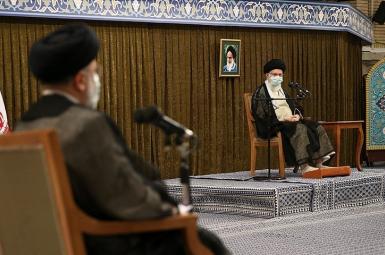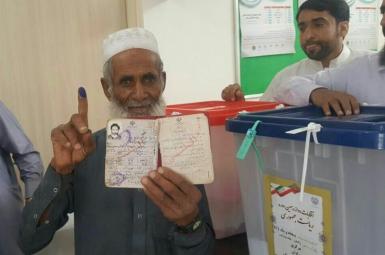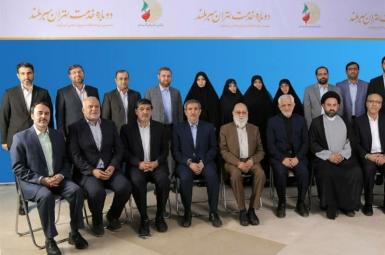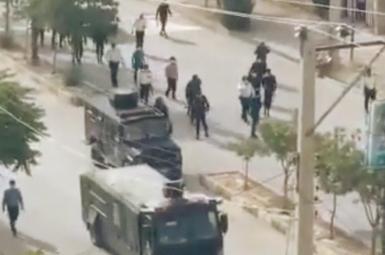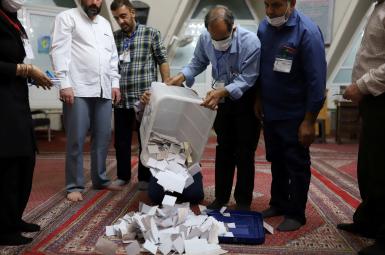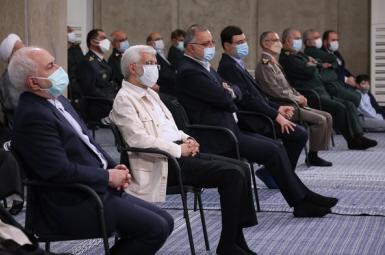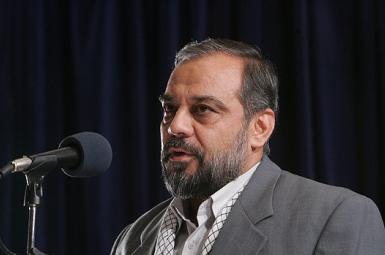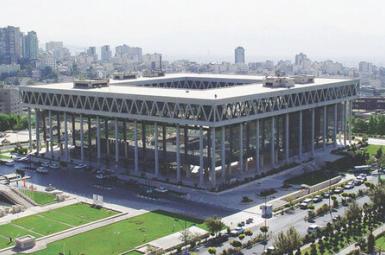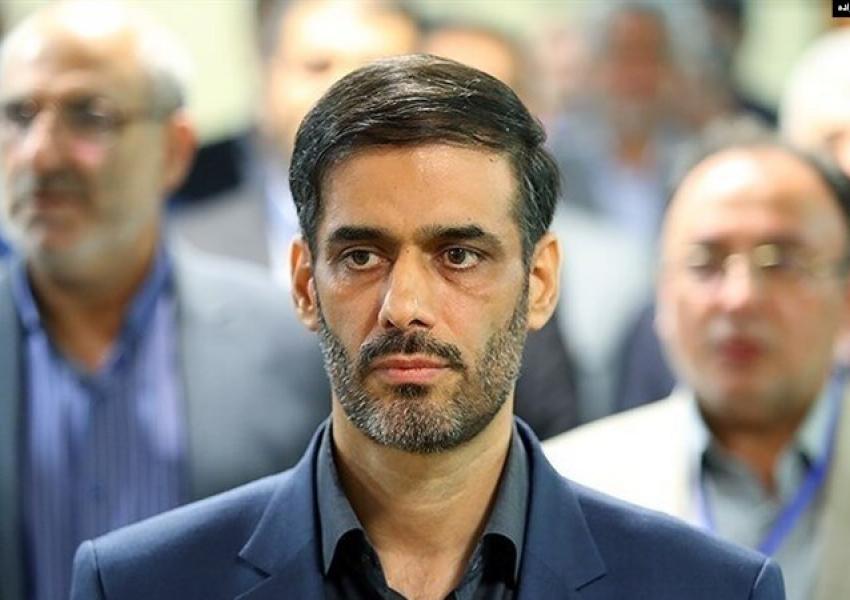
Who Is Iran Guards’ Saeed Mohammad?
By Jason M. Brodsky
With management experience, youthful looks, aviator sunglasses, and occasionally donning the olive drab uniform of the Islamic Revolutionary Guard Corps (IRGC), Dr. Saeed Mohammad appears to be out of central regime casting. Mohammad rocked the Iranian political world in recent weeks when he resigned from his position as commander of the IRGC’s Khatam al-Anbiya Construction Headquarters and later tweeted hinting at plans to run in the June presidential election. While Mohammad lacks a natural constituency and his chances for success remain unclear, his political maneuvering is demonstrative of the IRGC’s continued ascent within the Islamic Republic’s elected state.
Mohammad would not be the first onetime commander of the Khatam al-Anbiya Construction Headquarters to rebrand. Mohammad Bagher Ghalibaf, who served as commander from 1994-97, used the position to package himself as a technocratic manager, later leading to a stint as mayor of Tehran. He also was a perennial presidential candidate, losing multiple times, but inevitably wound up as a powerful speaker of parliament. Hassan Danaeifar, another former commander of Khatam al-Anbiya, would later appear on the scene as Iran’s ambassador to Iraq. Rostam Ghasemi would transition from the commandership of Khatam al-Anbiya to become Iran’s oil minister during the administration of Mahmoud Ahmadinejad. Ghasemi has also made no secret of his presidential ambitions. Thus, the position has a history of offering a career-making platform for entry into senior roles in Iran’s government.
Mohammad's career
Mohammad himself was born in 1968 and joined the IRGC at the young age of 19 in 1987. He holds a doctorate in civil engineering. Mohammad served at the helm of multiple Khatam al-Anbiya subsidiaries, including the Sepasad Engineering Company and the Iranian Atlas Group. Sepasad, which specializes in dam and road construction and tunneling, was sanctioned by the US government in 2007, when Mohammad started his tenure as CEO. It was designated under Executive Order 13382, which freezes the assets of weapons of mass destruction proliferators and their supporters. As an IRGC entity, Sepasad played a high-profile role in its economic conglomerate, spearheading construction of Line Seven of the Tehran metro. Leading these kinds of large-scale projects enabled Mohammad to bolster his managerial credentials and visibility within the IRGC. However, Sepasad’s involvement with projects such as the Gotvand Dam may also cause problems for Mohammad’s political ambitions, providing material for his rivals given the environmental problems it created and his association with the organization.
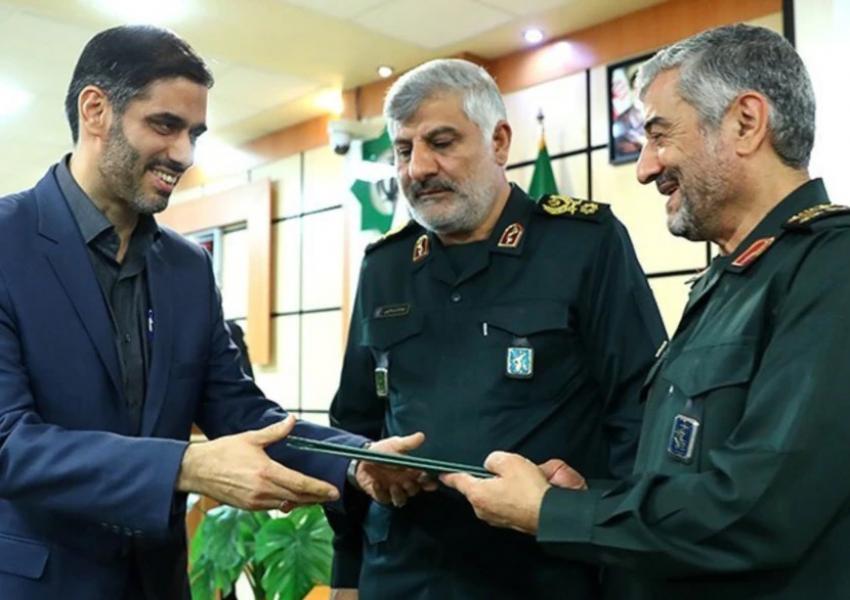
Mohammad also led Iranian Atlas Construction Companies Group. As the Wall Street Journal found, under his tenure, Atlas became associated with luxury residential and commercial development projects, including the Atlas Mall. This experience may enable Mohammad to showcase his economic prowess in boasting about the profits Atlas was able to generate while he was at the helm. But it’s this legacy which could also leave Mohammad vulnerable in an election campaign. The Atlas Mall generated great controversy, for example over a planned parking garage blocking expansion of Tehran’s metro.
Mohammad and Khatam al-Anbiya
In October 2018, Mohammad received his biggest break to date, when he was named as commander of Khatam al-Anbiya Construction Headquarters. His appointment was unique in two respects. First, he was different from his predecessors, in that unlike Mohammad, most had significant military experience during the Iran-Iraq War. Second, some occupied senior roles in other military branches prior to their service in the top job—for example, Ghalibaf was deputy commander of the Basij and Ghasemi was chief of the Nouh naval base. Mohammad had a distinct, more corporate Khatam al-Anbiya-centric pedigree. This dynamic can be seen in one of the first photos that was published of Mohammad upon his appointment as commander. He is standing beside his immediate predecessor Ebadollah Abdollahi and the then commander-in-chief of the IRGC Mohammad Ali Jafari. Both Abdollahi and Jafari were clad in the official uniform of the guardsmen, whereas Mohammad was dressed in a monochromatic black business suit. These were important optics as Mohammad sought to present himself as a technocrat working within Iran’s most fearsome praetorian guard.
According to an estimate by the US Treasury Department, in 2018, the year Mohammad began his tenure as commander, Iran’s Oil Ministry awarded Khatam al-Anbiya ten oil and petrochemical projects “worth the equivalent of 22 billion dollars, a value four times the official budget of the IRGC.” This aggressive takeover trend has continued in the years since, with Mohammad positioning Khatam al-Anbiya as a problem-solver, while making the Rouhani government seem inept. For example, last August, Mohammad claimed the presidential administration owed Khatam al-Anbiya billions of dollars. This January, Mohammad declared that the government would transfer ownership of discrete state-owned enterprises to his economic behemoth to compensate for its indebtedness.
He has also hewed closely to Iran’s supreme leader’s vision of a resistance economy, which aims to neutralize sanctions. Mohammad positioned Khatam al-Anbiya as spearheading such efforts, recently boasting to an audience that the guardsmen have “demonstrated that all difficulties and problems facing the country can be overcome despite sanctions and pressures exerted against the country.”
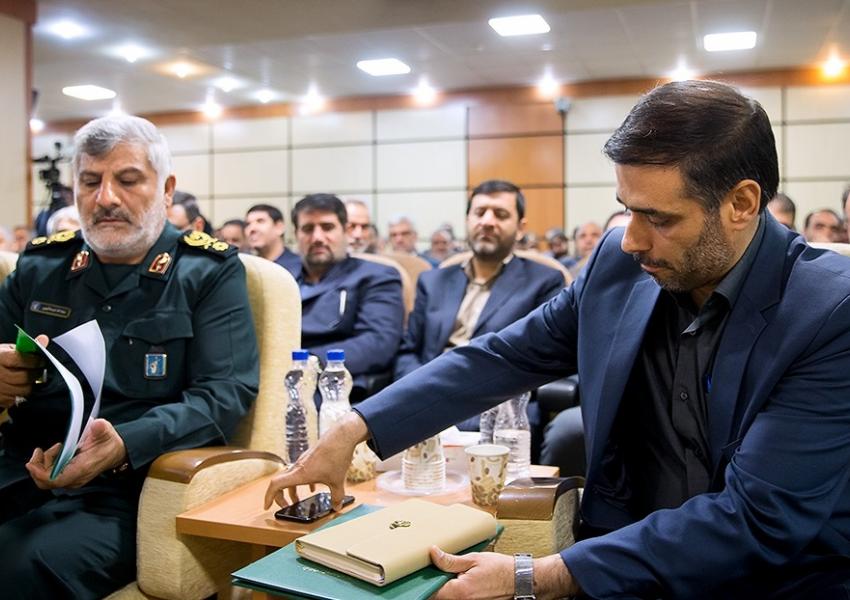
A new political career?
Before his resignation from Khatam al-Anbiya, Mohammad had been testing the waters for a political future. He increased his public profile at home and abroad. On the domestic side, he made repeated provincial trips—visiting some of the most restive areas in Iran including Ahvaz and Sistan and Baluchestan to inaugurate the tracklaying of the Chabahar-Zahedan railway. He has coupled these visits with headline grabbing announcements—for instance that Khatam al-Anbiya would develop the Ahvaz oil field as the third largest oil field in the world. Additionally, Mohammad has been increasingly pictured wearing the IRGC’s signature uniform—a contrast to the more business-like attire he had sported earlier in his career. Attention to such a wardrobe change may be seen as an effort to woo support from those attracted to the idea of a senior figure from the IRGC as Iran’s next president. Mohammad has also found time to lay the groundwork for a potential campaign, with reports that he met with two members of Iran’s Guardian Council, which vets candidates for state elections. Before he left Khatam al-Anbiya, Mohammad reportedly accused one of his predecessors, Ghalibaf, of corruption. Such a move may be an attempt by Mohammad to clear himself of the graft-tainted legacy of some guardsmen—including Ghalibaf, who some still believe harbors presidential ambitions—and in the process solidify more populist stances, after having been previously associated with luxury development projects. But Mohammad himself may face similar accusations, with a conservative politician Hamidreza Taraghi recently alleging Mohammad was removed from his position as commander because of unspecified “violations.” Nevertheless, he remains on the scene in the IRGC as an advisor to Hossein Salami, the commander-in-chief. To bolster his visibility abroad, Mohammad also opened a Twitter account in November 2020.
Last year Iran’s supreme leader explained the kind of candidate he’d like to see as the next president: “young and Hezbollah.” Saeed Mohammad fits the bill. At 53, he is older than some of the other ambitious members of the Islamic Republic’s establishment like Information and Communications Technology Minister Mohammad-Javad Azari Jahromi and President of the Supreme Audit Court Mehrdad Bazrpash. But he is younger than some of the older revolutionaries who remain on the scene as perennial presidential candidates like Mohsen Rezaei, Ali Larijani, and Ghalibaf himself. He also lacks their political baggage. Nevertheless, with multiple guardsmen entering the race, the IRGC may be subjected to an uncomfortable airing of internal factional politics within its ranks. That’s not to mention the incoming fire Mohammad would face from pragmatists in the Iranian establishment, who have criticized the outsized role the IRGC has played in the economy—President Rouhani once called it a “state with a gun.”
While Mohammad lacks extensive foreign policy credentials, he would be a reliable implementer of Khamenei’s vision of a resistance economy, and his election could increase the IRGC’s hold over government ministries. Given the uncertainties surrounding Mohammad’s electoral appeal, it is plausible his run is merely to increase his viability for a role in the new administration if he loses. In February, a poster circulated on social media, with Mohammad landing a spot in the administration of Saeed Jalili, a potential presidential candidate himself who serves as one of the supreme leader’s representatives on the Supreme National Security Council. In fact, two of Mohammad’s predecessors at Khatam al-Anbiya, Hassan Danaeifar and Rostam Ghasemi, served advisors to Rouhani’s First Vice President Eshaq Jahangiri on development of economic relations with Iraq and Syria. Thus, Mohammad may have his eyes on the first vice presidency or a similar position as a consolation prize, which would further entrench the IRGC in Iran’s government. If selected, he would also ascend to a position—first vice president—in which none of his predecessors has served.
In the end, Iran’s supreme leader will still drive the agenda on the most sensitive files in the next government—he remains the constitutional commander-in-chief regardless of who wins the election. However, Saeed Mohammad’s rise is emblematic of the ascendance of a second generation of IRGC commanders to the Islamic Republic’s top ranks. He remains an ambitious and enigmatic figure, who will likely remain a player in Tehran.

